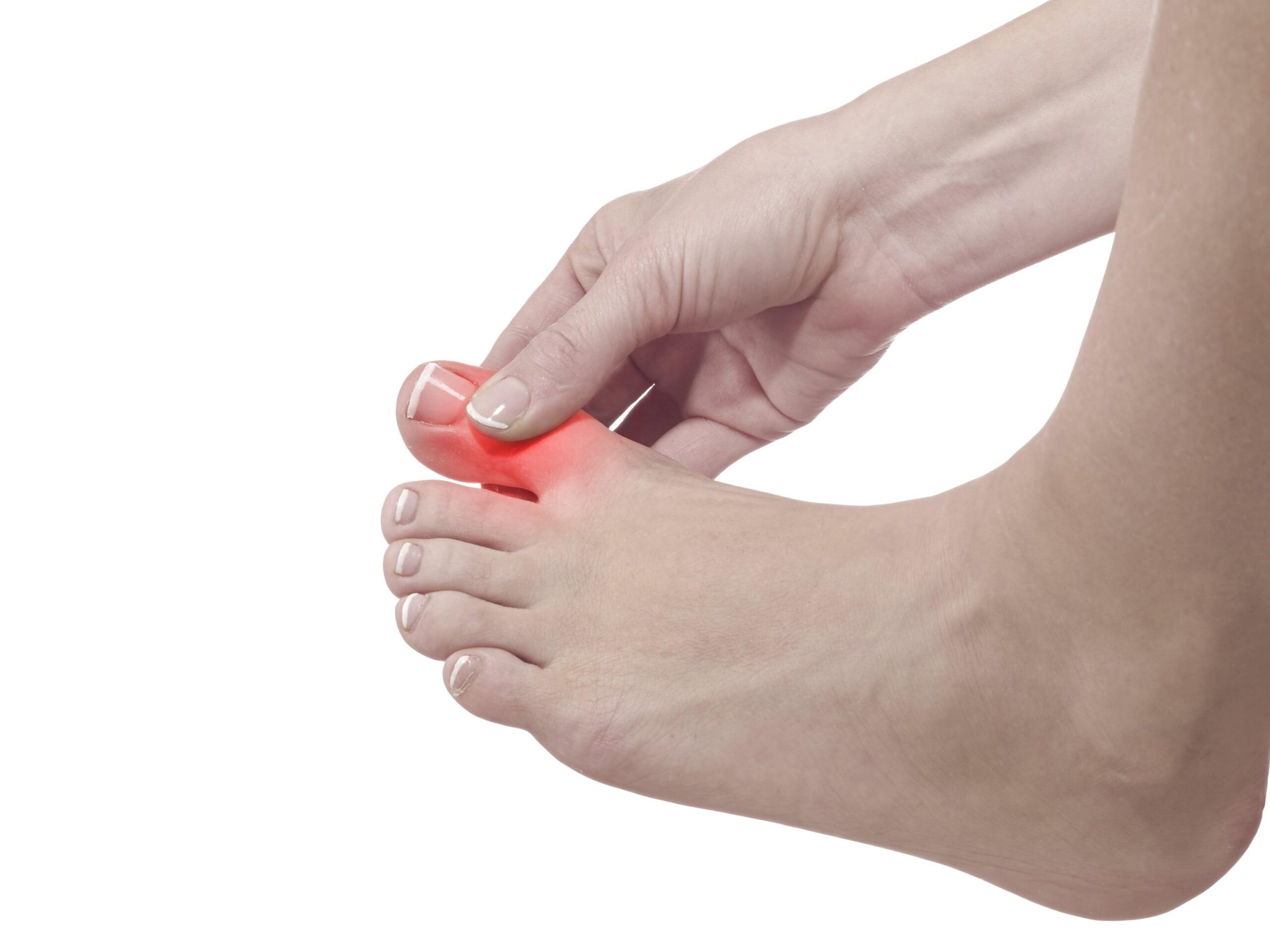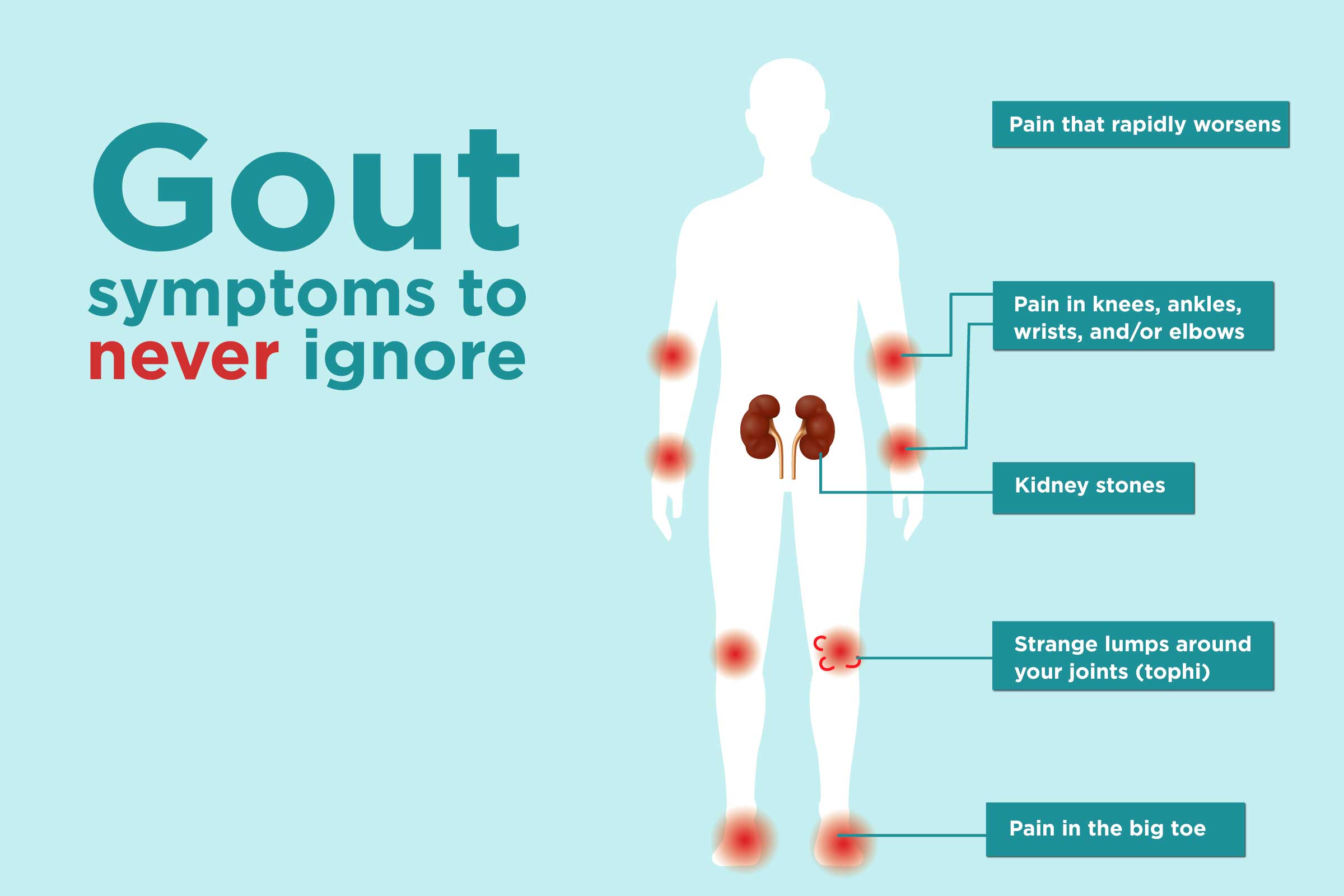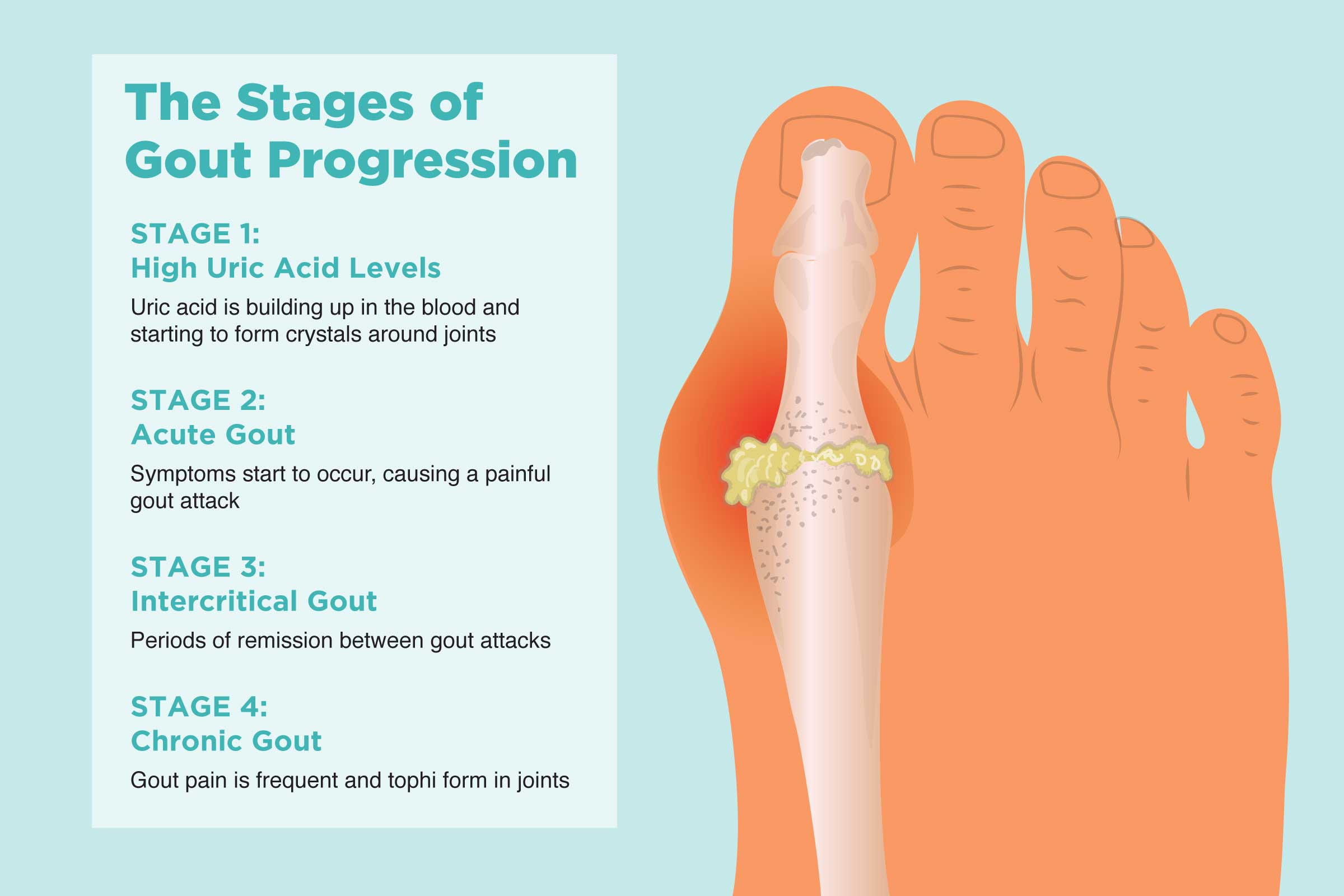
Gout is a chronic inflammatory form of arthritis caused by elevated levels of uric acid in the blood, known as hyperuricemia. Gout is a metabolic disorder where the body accumulates too much uric acid, and its crystals deposit in joints and other tissues. Uric acid is a breakdown product of purines – organic compounds found in certain food products and body cells. A healthy body eliminates uric acid through the kidneys with urine. However, when the production of uric acid exceeds its removal from the body, or when the kidneys do not efficiently remove uric acid, gout can develop.
The emergence of gout
Gout is one of the oldest known inflammatory joint diseases, associated with the accumulation of uric acid crystals in the joints. It belongs to the group of arthritis diseases and is characterized by painful, recurring joint inflammations, most often affecting small joints, such as the big toe joint. The emergence of gout is a complex process influenced by various genetic, environmental, and lifestyle factors.
- Genetics: Certain genetic factors can increase the risk of developing gout. People whose close relatives suffer from gout have a higher risk of developing the disease themselves.
- Diet: Foods containing purines, such as red meat, seafood, and certain alcoholic beverages, especially beer, can increase the level of uric acid in the body.
- Weight and obesity: Being overweight and obesity increase the production of uric acid in the body and can reduce its elimination through the kidneys.
- Medical conditions: Certain diseases and conditions, such as hypertension, diabetes, metabolic syndrome, and kidney function disorders, can increase the risk of gout.
- Medication: Some medications, including thiazide diuretics, beta-blockers, and low-dose aspirin, can increase the level of uric acid in the blood.
When uric acid crystals accumulate in the joints, they cause a strong inflammatory response. This leads to the characteristic symptom of gout – a painful, reddened, swollen, and hot joint. The first joint usually affected is the base joint of the big toe, but gout can also affect other joints, such as the ankle, knee, wrist, hands, and elbow joints.
What is the course of development of gout?
Gout is one of the forms of arthritis and is characterized by periodically recurring acute attacks, which can over time progress to chronic stages of joint damage.
The course of gout development:
Hyperuricemia
The onset of gout is associated with hyperuricemia – a condition where there is too much uric acid in the blood. Uric acid is a breakdown product of purines found in food and body cells. When uric acid cannot be effectively eliminated by the kidneys or is produced too intensively by the body, its accumulation begins.
Acute gout attack
Hyperuricemia can lead to the deposition of uric acid crystals in the joints, especially in the big toe joint. This causes inflammation, pain, redness, swelling, and heat in the affected area. An acute attack usually occurs suddenly, most often at night, and can last several days or even weeks.
Inter-critical period
This is the period between acute attacks when the patient does not experience symptoms. Although symptoms are not felt, uric acid crystals continue to accumulate in the joints and tissues.
Chronic gout
Uncontrolled hyperuricemia can eventually lead to chronic gout. During the chronic stages, joint damage becomes permanent, and tophi – hard uric acid crystal nodules in the skin and around the joints – may form. This can lead to joint deformities and reduced mobility.
Complications
Uncontrolled gout can lead to various complications, including joint erosion and destruction, kidney stones due to the accumulation of uric acid in the kidneys, and kidney function disorders.

Disease symptoms
Gout is often associated with other health disorders, such as obesity, high blood pressure, diabetes, and kidney diseases. Gout symptoms can vary depending on the stage of the disease and individual patient characteristics.
- Joint pain: Gout often starts with sudden, intense pain in one or several small joints. The most common site is the big toe joint, but gout can also affect the ankle, knee, hand, wrist, and other joints.
- Swelling and redness: Inflammation in the joint causes swelling, skin redness, and a sensation of heat in the affected area. The skin area covering the joint can become very sensitive even to the slightest touch.
- Limited joint movement: Due to pain and swelling, joint mobility can be impaired, making normal activity or movement difficult.
- Recurring attacks: Gout is characterized by periodically recurring acute attacks. Although patients may feel well between attacks, uncontrolled gout can gradually worsen the condition of the joints.
- Formation of tophi: Long-standing uncontrolled gout can lead to the formation of tophi – nodules of uric acid crystals that form under the skin and around the joints. Tophi can be painful and cause joint deformation.
- Fever and general malaise: Acute gout attacks can be accompanied by general malaise and even fever.
Factors contributing to the onset of gout symptoms:
Gout symptoms can be triggered or worsened by various factors:
- Diet: Foods containing purines (red meat, seafood) and alcohol, especially beer, can promote the accumulation of uric acid.
- Weight and lifestyle: Being overweight, lack of physical activity, and certain health disorders, such as metabolic syndrome, can increase the risk of gout.
- Hydration: Insufficient water intake can hinder the removal of uric acid from the body.
- Medication and medical conditions: Some medications and health conditions, such as kidney failure, can increase the level of uric acid in the blood.
Gout management
The management of gout symptoms includes the treatment of acute attacks, reduction of uric acid levels, and lifestyle changes. Acute attacks are most often treated with nonsteroidal anti-inflammatory drugs (NSAIDs), colchicine, or corticosteroids. Long-term management includes medications that reduce uric acid production (e.g., allopurinol) or increase its elimination, as well as lifestyle changes, such as dietary modifications, weight loss, and adequate hydration.
Gout is a chronic disease, but with proper management and care, its symptoms can be reduced, and the quality of life can be improved.

How is gout different from other forms of arthritis?
Gout differs from other forms of arthritis due to its specific etiology, symptoms, diagnostics, and treatment. In gout, the main focus is on regulating uric acid levels, whereas in other forms of arthritis, the focus is on modulating the immune system and protecting the joints. Although all types of arthritis can cause pain and movement difficulties, their treatment and management strategies differ.
Information sources
- American College of Rheumatology
- Arthritis Foundation
- The New England Journal of Medicine
- Journal of Rheumatology
# podagra







